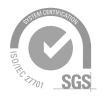
Research Disclaimer
Crypto.com Research and Insights disclaimer for research reports
Executive Summary
- Real-world asset (RWA) tokenisation is revolutionising traditional finance by bringing liquidity, efficiency, and accessibility. In the past 12 months, the overall RWA market grew by 106%, reaching US$19.2 billion.
- Stablecoins that have tokenised fiat currencies dominate the RWA market, with a US$235 billion market cap. Other popular tokenised RWAs are private credit, treasuries, commodities (e.g., gold), public stocks, and others (e.g., real estate, carbon credits). Tokenised private credit and treasuries represent the two largest asset classes within the RWA realm, with a market cap of $12.2 billion and US$5.2 billion, respectively.
- Traditional financial institutions have increasingly recognised the potential of RWA tokenisation in enhancing their existing product offerings.
- On the country level, regulatory changes and country-led RWA trials have also provided clearer and more favourable guidelines for asset tokenisation. Examples include Singapore’s Project Guardian and Hong Kong’s Project Ensemble Sandbox.
- When selecting a blockchain for RWAs, issuers consider the network’s performance (e.g., transaction speed and cost), security and stability, and the ecosystem. Ethereum has the largest share of the tokenised RWA market in terms of market cap (54%), becoming a popular choice for issuers like BlackRock, Hashnote, and Ondo Finance. Recently emerging as the second-largest RWA blockchain is zkSync Era (22%).
- Institutions are also increasingly embracing the trend of multichain deployment to boost liquidity. In addition, there’s a rise of RWA-specific chains, including Plume Network and Mantra, with built-in features to simplify asset tokenisation.
- Tokenised RWAs represent only 0.02% of the total RWA market size in traditional finance, according to consulting firm Roland Berger. This highlights the significant underpenetration of tokenisation and major potential ahead. In fact, according to Boston Consulting Group, tokenised RWAs are expected to grow exponentially to US$16.1 trillion by 2030, representing 10% of the global GDP by then.
1. Introduction
Real-world asset (RWA) tokenisation is revolutionising traditional finance by bringing liquidity, efficiency, and accessibility. It has gradually moved forward from trials and pilot test phases to real-world implementations across asset classes, including bonds, funds, commodities, and illiquid assets. In the past 12 months, the overall RWA market grew by 106%, reaching US$19.2 billion.
The growth in RWA tokenisation was fuelled by a combination of factors, including a favourable regulatory landscape, as various regions and financial institutions started leading trials to embrace tokenisation. Developments in blockchain technology have also contributed to RWA adoption, as investors continue to reap the benefits of tokenisation:
- Enhanced efficiency and cost reduction: Issuers can enjoy lower issuance costs, as well as faster settlement times, through smart contracts.
- Improved liquidity: Illiquid assets can now be tokenised and traded; trading hours could also extend due to the 24/7 nature of blockchain.
- Fractional ownership: Lowers the minimum investment threshold, which allows for a larger group of investors.
- Improved transparency: Transactions and ownership are easily verifiable and traceable on the blockchain.
Stablecoins, which are commonly backed by fiat currency like cash and cash equivalents (short-term treasuries), dominate the RWA market with a US$235 billion market cap (at the time of writing). USDT and USDC combined have an 87% market share, with US$521 billion in average monthly transaction volume in the past 12 months.
In addition to stablecoins that tokenised fiat currencies, other popular real-world assets that are tokenised are private credit, treasuries, commodities (e.g., gold), and public stocks. Some innovative use cases (e.g., real estate, carbon credits) and new products have also been explored.
Generally, the tokenisation process involves the following steps:

2. Tokenisation by Asset Classes
2.1 Overview
Private Credit
Tokenised private credit represents the largest asset class within the RWA sector, with an active loan value of US$12.2 billion at the time of writing, a 62% year-on-year growth. It enables investors to earn yield by lending, while allowing originators to obtain debt via their RWA-backed collateral.
Figure, a non-bank originator of home equity lines of credit, is the largest issuer within the asset class, taking up US$9.5 billion of active loans. It also launched Figure Connect in June 2024, a blockchain-based marketplace of private credit loans, to enhance liquidity and transparency within the private credit market. Protocols like Centrifuge, Maple, and Goldfinch are also major players, facilitating loan origination and repayment.
Treasuries
Tokenised treasuries (especially US treasuries) is the second-largest asset class of RWAs, with a US$5.2 billion market cap at the time of writing, a 383% year-on-year growth. They represent tokenised US treasuries, as well as cash and cash equivalents, and usually have the characteristics of being low risk and high liquid. BlackRock’s BUIDL, Hashnote’s USYC, and Franklin Templeton’s FOBXX are amongst the largest players within this asset class.
Read more on Tokenisation of RWAs & Yield-Bearing Stablecoins
Commodities
Tokenised commodities have a market cap of US$1.3 billion, a 51% year-on-year growth. They represent digitalised versions of assets, including precious metals (e.g., gold and silver) and oil. Each token represents fractional ownership of the underlying commodity, which enables token holders to own a portion of the asset without physical storage.
Gold is the main underlying asset, and the major issuers in this category include Paxos Gold (PAXG) and Tether Gold (XAUT).
Stocks
Tokenised stocks are digitalised representations of shares of a public listed company, and have a current market cap of US$486 million..
According to RWA.xyz, Exodus Movement, Inc. Class A Common Stock (EXOD), which resides on the Algorand network, currently dominates the market. Exodus tokenised its common stock on the blockchain, providing investors with a novel way to invest and trade the stock. In addition, this also opens up use cases, including dividend payouts through USDC and corporate governance actions on the blockchain.
It is noted that tokenised securities are still subject to strict regulations, including the registration requirements under the US Securities and Exchange Commission (SEC). We anticipate that, under the new crypto-friendly regime in the US, more growth opportunities may open up in the future as we continue to see demand from investors.
Others
Other RWA tokenisation applications include corporate bonds, alternative funds, and non-US government debt. This represents a market size of US$602 million at the time of writing, a 140% year-on-year growth.
In addition, institutions are gradually exploring the tokenisation of illiquid assets, including real estate and private equity. Traditionally, these assets have high barriers to entry and are difficult to trade. Tokenisation enables fractional ownership and lowers the minimum investment threshold, which can increase accessibility and liquidity.
2.2 Institutional Adoption of RWAs
Traditional financial institutions have increasingly recognised the potential of RWA tokenisation in enhancing their existing product offerings. BlackRock, for example, announced its US$10 trillion tokenisation vision to signal its commitment in innovation to redefine the traditional financial landscape. There are also various RWA tokenisation use cases, on the company and country level, that are being explored.
For instance, JPMorgan’s Kinexys Digital Assets is a proprietary tokenisation platform that enables digital financing and digital debt built on top of its private Kinexys blockchain infrastructure.
The main asset classes that have been brought on-chain include:

2.3 Regional Initiatives on RWAs
On the country level, regulatory changes and country-led RWA trials also provide clearer and more favourable guidelines for asset tokenisation. These are important steps to encourage private-public sector cooperation to advance RWA adoption.
| Region | Government-Led RWA Trials and Relevant Regulatory Updates |
|---|---|
| Americas | – US (Country level): US Senators move forward with GENIUS Act (stablecoin bill that aims to divide stablecoin regulation across state and |
| Europe | – European Union’s Markets in Crypto-Assets Regulation (MiCA). – European Central Bank pilot of euro wholesale central bank digital currency (wCBDC), plus trials of distributed ledger technology with private sector for securities settlement, margin/repo, cash payments, etc. |
| APAC | – Hong Kong: Project Ensemble Sandbox, led by Hong Kong Monetary Authority (HKMA), aims to examine interoperability amongst tokenised assets, tokenised depo |
| Middle East | – Qatar: Digital asset and tokenisation framework to ensure security and transparency. – UAE: The Dubai Land Department started the |
| Region | Americas |
|---|---|
| Government-Led RWA Trials and Relevant Regulatory Updates | – US (Country level): US Senators move forward with GENIUS Act (stablecoin bill that aims to divide stablecoin regulation across state and |
| Region | Europe |
| Government-Led RWA Trials and Relevant Regulatory Updates | – European Union’s Markets in Crypto-Assets Regulation (MiCA). – European Central Bank pilot of euro wholesale central bank digital currency (wCBDC), plus trials of distributed ledger technology with private sector for securities settlement, margin/repo, cash payments, etc. |
| Region | APAC |
| Government-Led RWA Trials and Relevant Regulatory Updates | – Hong Kong: Project Ensemble Sandbox, led by Hong Kong Monetary Authority (HKMA), aims to examine interoperability amongst tokenised assets, tokenised depo |
| Region | Middle East |
| Government-Led RWA Trials and Relevant Regulatory Updates | – Qatar: Digital asset and tokenisation framework to ensure security and transparency. – UAE: The Dubai Land Department started the |
3. RWAs by Chain
Different blockchains have unique features and ecosystems that can benefit RWA tokenisation. Depending on the type of asset tokenised and the use case, institutions may choose different blockchains to tokenise their RWAs.
3.1 Overview
When selecting a blockchain for RWAs, issuers consider the network’s performance (e.g., transaction speed and cost), security and stability, and the ecosystem.
Ethereum has the largest share of tokenised RWAs by market cap (54%), becoming a popular choice for issuers like BlackRock, Hashnote, and Ondo Finance. Additionally, zkSync Era recently emerged as the second-largest blockchain (22%), supported by Tradeable’s tokenisation of private credit assets.
3.2 Recent Trends
Multichain Deployment
While there are deployments on private blockchains and proprietary tokenisation platforms (e.g., JPMorgan’s Kinexys and HSBC’s Orion), we have observed that institutions are increasingly embracing public chains like Ethereum. In addition, there has been an uptick in multichain deployment, which increases the funds’ availability to more investors and boosts liquidity. BlackRock’s BUIDL initially launched on Ethereum, then expanded to Aptos, Arbitrum, Avalanche, Optimism, and Polygon in November 2024, and most recently to Solana in March 2025. Franklin Templeton’s FOBXX also expanded beyond Stellar to Avalanche, Aptos, Base, and Ethereum.
RWA-Specific Chains
There is also a rise in RWA-specific chains, including Plume Network and Mantra. These chains have built-in features to simplify asset tokenisation, ensuring compliance and security. Plume Network is an EVM-compatible Layer-1 blockchain that allows assets to be tokenised and used in DeFi platforms to generate yield. Mantra, which started as a DeFi platform, has also ventured into RWAs and recently signed a deal with Dubai’s DAMAC Group to tokenise real estate assets. It should be noted that, while these chains may have infrastructure and security features optimised for RWA integration, they are often emerging networks with a shorter track record.
4. Outlook
Tokenised RWAs are currently a $247 billion market, including stablecoins, representing only 0.02% of the total RWA market size in traditional finance, according to global strategy consulting firm Roland Berger. This highlights the significant underpenetration of tokenisation and major potential ahead. In fact, according to Boston Consulting Group, tokenised RWAs are expected to grow exponentially to $16.1 trillion by 2030, representing 10% of the global GDP by then.
A positive tokenisation flywheel effect is anticipated, where funds moved on-chain will lead to an increase in tokenised investment options, which will subsequently attract more tokenised capital. This trend will be fuelled by the demands of existing crypto owners, traditional financial institutions, and governments. Overall, RWA tokenisation is poised to play a revolutionary role in the financial industry.
Read the full report: Wall Street On-Chain Part 2 – RWA Tokenisation
Interested to know more? Access exclusive reports by signing up as a Private member, joining our Crypto.com Exchange VIP Programme, or collecting a Loaded Lions NFT.
Authors
Crypto.com Research and Insights team
Get the latest market, DeFi & NFT updates delivered to your inbox:
Be the first to hear about new insights:






